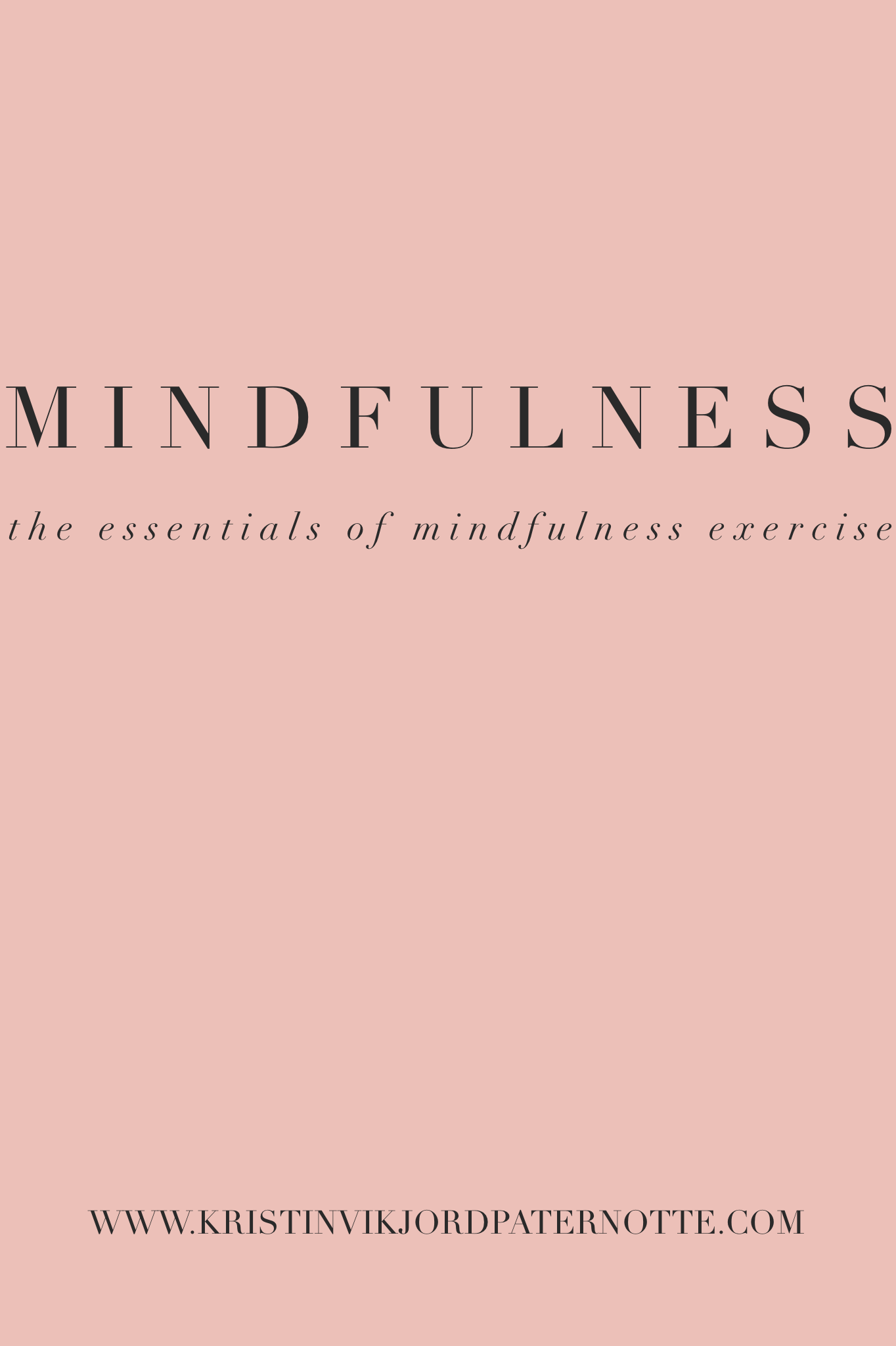
30 Aug Mindfulness – The Essentials of Mindfulness Exercise
One of the questions I get often is, what are the essentials of mindfulness exercises and meditation?
Mindfulness is a well-used word, which just like the word yoga (often confounded with asana), has been watered out. Mindfulness often refers to being mindful, and defines as attentive awareness, in a kind, non-judgemental way, in the present moment.
Mindfulness – is first and formost an ATTITUDE
A beneficial, and skilful attentive attitude, here and now, a bit similar to selective attention, with a curious, and more neutral inner voice (read: not extensive positive, nor extensive critical, but congruent)
How is MEDITATION different from mindfulness?
Meditation is the formal exercise, the most common method (often seated posture) we practice mindfulness in.
- First your learn to concentrate
- Next, you learn to move your focus of attention from one object to the other (ex. breath, body sensations, thoughts, emotions)
- Then, you learn mindfulness, meaning how to notice these objects PASSING your attention, learning how to hold it, embody it as it arises in intensity, then passing again. So not holding or clenching an object in our focus of attention, but noticing all objetcs mechanics of arising and passing.
Several mindfulness-based courses and evidence-based protocols has been developed as therapy or to support treatment. These are:
- MBSR (mindfulness based stress reduction): For stressmanagement, generic approach
- MBCT (mindfulness based cognitive therapy): Relapse prevention depression
- MBRP (mindfulness based relapse prevention): relapse prevention addition and substance abuse
- DBT (dialectic behavior therapy): mindfulness as part of treatment for borderline personality disorder
And, back to the essentials of mindfulness …
Mindfulness is, just like asana in Patanjali´s Ashtanga Yoga, only one of eight limbs in Buddha´s thesis on how to manage the deep valleys of life, and better master difficult emotions. The meaning of mindfulness is thus practicing how to respond more skilfully, or more beneficially, than reacting on impuls. In this sense, Buddha was the first cognitive therapist, teaching folks SKILLFUL AFFECT REGULATION (read: beneficial emotional expression and mastery).
As psychologist I want to see yoga and mindfulness in general education, for several reasons, but amongst others because it cultivates affect regulation,and because there´s a ton of PSYCHOEDUCATIONAL benefits which can be conveyed with simple pedagogical EXPERIENCE BASED exercises to students. Check out THIS article, on psychosocial aspects of social media platforms, and my suggestions to new subjects in primary education.
We can practice mindfulness through formal practice (seated meditation, walking meditation, moving meditation = yoga), or informal practice (that includes everything OFF the mat).
Here are the Essentials of Mindfulness Exercise (my translation)
4 ennobling truths
- Life is challenging
- The challenges are consequenses of attempts to control life´s circumstanzes (read: thoughts, behavior, feelings, the body) in one direction or the other.
- There is a way to free yourself from the clench of control behaviour and thoughts
- The following 8 steps will help you:
Skillful:
- – understanding or perspective
- – thinking or intention
- – speech or dialoge (both inner, and towards others)
- – action and behavior
- – living
- – effort or energy
- – attitude, or attentive awareness (mindfulness)
- – concentration or focus of attention
NUDGE OF ACTION
An example of number 6: Skillful effort or energy is very useful to reflect upon in relation to our societal model honing efficiency, productivity, and is result-oriented, with values supporting PERFECTIONISM – a trait triggering increased stressrelated diseases, like burn outs, anxiety and depression, as well as more complex disorders as addictions and eating disorders.
Take a moment to reflect over something you do, everyday. Like cooking, getting ready for work, specific work tasks, or similar.
- How much effort do you put into it?
- How does it serve you?
- Can you do it another way?
We can practice mindfulness through OBSERVING following 4 objects:
- The BODY, bodily sensations and the breath. For example, how can you notice your body, right now?
- The INTENSITY of the different sensations in a given moment. For example, does the sensations have a higher intensity/feel more uncomfortable, or do they have a lower intensity/feels more pleasant, or are tehy ore neutral?
- The MIND. That is, noticing that we have a mind, with thoughts and feelings intertwined. Meta-perspective, meaning noticing we are thinking, and have thoughts without being our thoughts.
- The PHENOMENA of the mind, like fantasies, ideas andmemories, and that these phenomena live in the time dimension between past, the immediate moment, and the future.
We always return our attention to the body, in the nere and now, because it´s only in the NOW we can have the most accurate perceptual neutral contact (in example seing that all is MAYA (sanskrit)/ illusion = our perceptual system is confined (sammensatt) of constructions of subjective experiences based on every individuals individuallue conditioned brain.
This doesn´t mean we should go around striving to be in the immediate momet, constantly! That is not only an impossibility, but also directly triggering for perfectionism. However, it does mean that it´s very beneficial to learn how to taking solid pauses, and cultivating some decent parasympatic toning of the nervoussystem through formal mindfulness.
“I’m not my body. Nor my thoughts. Nor my feelings”.
Because it is when we are going through challenging emotional times, that we feel most FRAGMENTED, and we become myopic in our attention,that means we get hung up on either the body, the thoughts, or emotions.
Some very simplified examples are these:
I feel fat BECOMES I am fat
I feel depressed BECOMES I am depressed
I feel insecure BECOMES I am insecure
Both yoga and mindfulness can contribute to make the fragmented experience become whole. That is, to practice mindfulness meditation and mindful yoga, can in longterm have a wholesome effect.
Therefor, mindfulness is a beneficial way of learning, practicing and cultivating SELF-CARE, through understanding and seeing your WHOLE self you can understand and see the wholeness of others too.
Enjoy!



